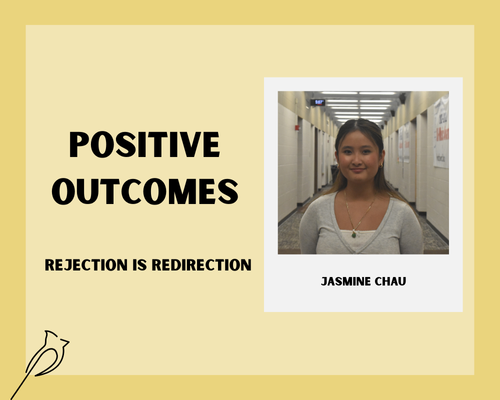Chat with Nat
Body neutrality is more important than body positivity
The year was 2019, I was four months into 7th grade, and it was my second week being a member of the Instagram community. I stared at my screen as my eyes darted across an illustration posted on the account “@Feminist.” The photo showed a colorful and bright depiction of people standing in their underwear with the caption: “All butts are beautiful.”
In that moment a realization dawned upon me. I had never once looked at my butt.
Truthfully, I had never looked at any part of my body enough to develop a serious insecurity. But, that one Instagram post was the beginning of a chain of events to lead me to be hyper aware of my own body and its appearance.
Unfortunately I’m not the only person to be shocked into insecurities like this. I’ve had various conversations with my friends about how they loved their noses or their legs or their faces until they were told to love them. While seeing yourself in a positive light is obviously a good thing, forcing body positivity can just create previously unforeseen insecurities.
Body positivity has found its rise on social media- the world of unrealistic standards and photoshopped fake bodies. So it’s fairly expected that something with a positive sentiment could turn toxic quickly. One may ask, “why is positivity bad?” Because the act of pointing out parts of someone’s body makes them inherently more likely to compare themselves.
There is no way to represent every person’s body because all bodies are unique. For example if one is trying to normalize the appearance of a certain body part, say hands for this example, they can’t show a representation of all peoples hands. An illustration or a photo can only show a finite amount of hands. And, depending on the source of the message, there could be inherent biases such as not showing hands of all races, only showing women’s hands or excluding physically disabled people’s hands. Without equal representation, one could fall into a hole of comparing themselves.
This example has truly come to fruition in the body-positivity community with the shape of ones’ figure. Time and time again, one can pull up a social media account claiming to represent all people and finding a monolith of the same shaped bodies.
To add on to this list of downfalls to the body positivity movement, you will also find a common demographic in these communities: women. There is a severe lack of intersectionality for men, transgender people, disabled people and people of color. It’s even evident in the “#bodypositivity” tag on Instagram. With over 10 million posts one would expect diversity, but just in the first few hundred posts you see a homogenous group of people that fit stereotypes being perpetuated by the rest of the movement.
In an analysis of the Body Positive movement by an undergraduate student at the University of Nevada studying psychology, Ayla S. Gelsinger said, “the Body Positive movement strayed from its initial goals, thereby failing to provide an outlet for bodies that diverge from the ideals set by popular media.”
Not only are teenagers in my social groups noticing these disparities in representation, but scholars are writing research papers about the downfalls of the Body Positivity movement.
But there must be a better alternative to this way of thinking, right? Of course there is.
A juxtaposing idea that was coined by various users on the internet around 2015, is Body Neutrality. The basic concept is that one’s body is not something to love for its extrinsic aesthetic value, but rather a vessel that one was born with. One’s body doesn’t need love, it needs acceptance.
In the thinking of Body Neutrality, one wouldn’t comment on how all shapes of hands are “beautiful”, instead how functional they are for being hands. A person’s nose wouldn’t be an object to admire for its steep slope or dramatic hook, it’s just your nose, a facet of your face that helps you breathe. One’s feet don’t look “weird,” they are feet, just like everyone else’s feet.
This isn’t the end of all bodily insecurities, but thinking about one’s body from an objective standpoint can help alter one’s thinking from hyper awareness to acceptance. Going back to my example at the beginning, with this thinking I’ve returned to my unknowing bliss about my own behind. I know my butt is there and functioning, it doesn’t have to be beautiful.

Nearly three years ago, on a fateful day in the spring of my freshman year I voted “Yes” on a Journal instagram poll about interest in making graphics....








